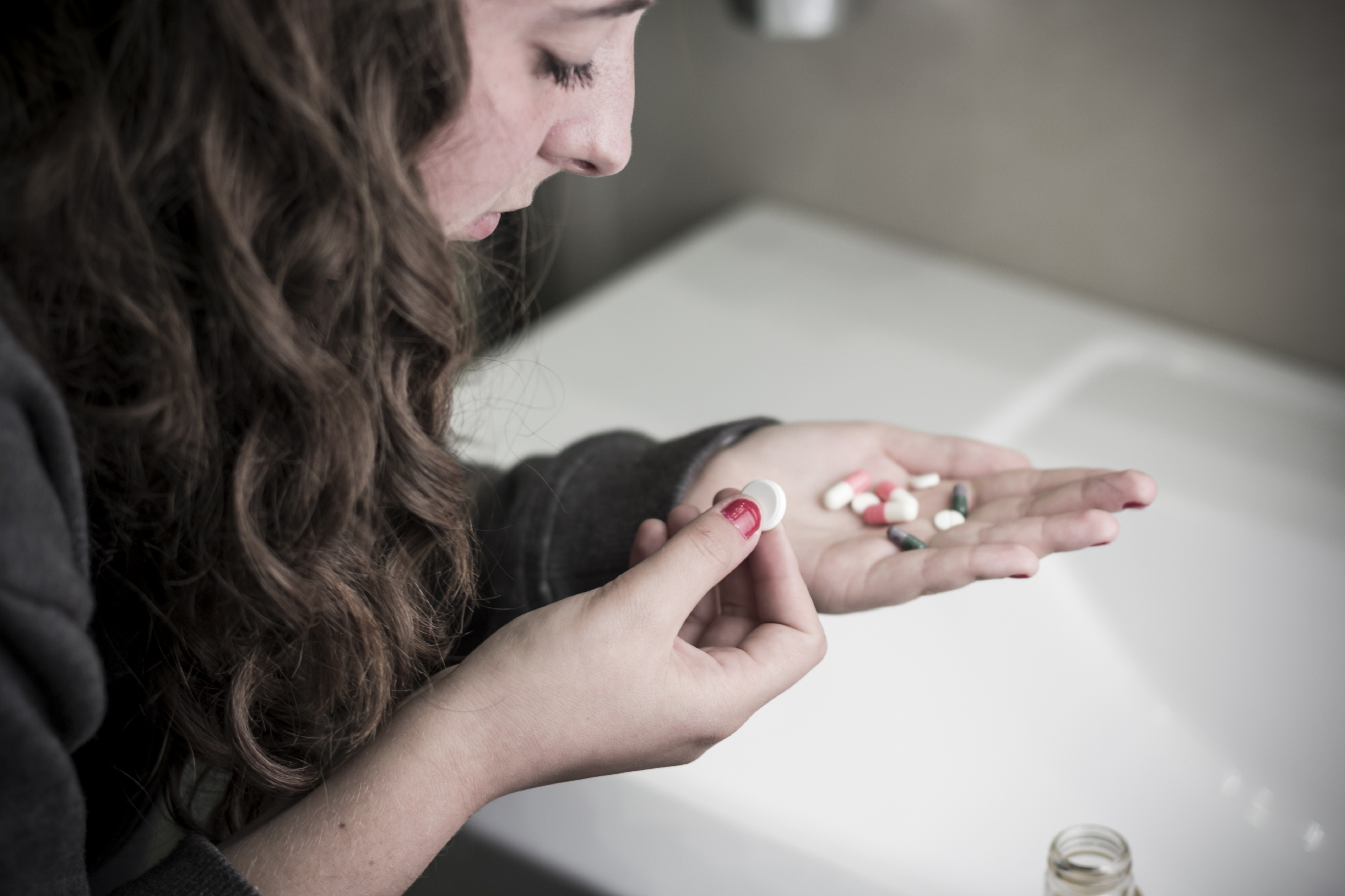
04 Jun Popular Benzos Abused by Georgia Teens
Table of Content
When you reach adulthood, it is quite easy to forget about all of the emotional and psychological pain a teenager goes through during their formative years. Our minds do a fantastic job of protecting us from past pain, from misremembering the awkward years, the lonely days, the anger, the anxiety, the insecurity. During this clumsy transition from childhood into adulthood, a teenager’s brain and body is being pumped with hormones that seem to enhance all of these emotions and mood swings. Add that sense of unease to the social pressure and expectations to conform to what others are doing, and it is not hard to see why many teens in the state of Georgia begin experimenting with drugs. This seemingly constant hormonal stress combined with a desire to fit in makes it understandably difficult to say no.
A look at the number reveals a growing portion of the Georgian teen population is more susceptible to abusing drugs than ever before. According to the CDC, more than 10% of Americans age 13 and up will use an illicit drug at least one time per month, and in Georgia, over 9% of teenagers reported illegal drug use within the last calendar year. Alcohol, tobacco, marijuana, and cocaine are common causes for Georgian teenage hospitalization and to a lesser extent, heroin, MDMA, and psychoactives. A growing threat to the state that all too often goes overlooked, however, is the rise of prescription pill-related deaths of Georgian teens.
The focus of prescription drug debates generally concentrates on opiates, and while they are indeed a dangerous and popular substance to be abused, seeing as they are the number one killer of people under the age of 35, in many ways, benzodiazepines are more popular amongst teens. If you were to compare the two drugs in isolation, opiates are more potent and addictive; nevertheless, with the way teenagers use the drugs, benzos may actually end up being deadlier. Because most teens find these drugs in their parent’s medicine cabinet, remain naively aware of how dangerous the benzos they are casually taking at a party really are.
Discussion about prescription drugs tend to focus more on opiates, what may be more popular among the teens I see are a class of drugs called benzodiazepines. These drugs have a few names that may appear in your medicine cabinets and are generally prescribed for severe anxiety disorders. All drugs in this class are highly addictive, and carry a high risk of overdose at low doses. Teens who use these drugs are usually unaware of how dangerous the medication they are taking truly is and think that only high doses can cause them problems. Because of this, it is essential that you as a parent are aware of what benzos are, what types Georgian teens are subject to drug abuse, and what can be done.
What are Benzodiazepines?
Medically cataloged as a form of anti-anxiety or anti-depressants, benzodiazepines act as a depressant upon the central nervous system by stimulating the brain’s gamma-aminobutyric acid (GABA) receptors, which alter our anxiety levels, pain sensitivity, sleeping and mood patterns. When in effect, the stimulation of GABA, in turn, depresses nerve activity, creating a sedative or tranquilizing effect that modifies how the brain interprets anxiety or fear. However, the misuse of anti-anxiety drugs can be detrimental.
Benzos were created as a barbiturate substitute in the 60’s and largely replaced them over time as treatments for muscle tension, social anxieties, phobias, seizures, insomnia, panic attacks or muscle spasms. The more famous of such pills include Xanax (alprazolam), Ativan (lorazepam), Klonopin (clonazepam), Valium (diazepam), and Restoril (temazepam). While these drugs are all ‘downers’ central nervous system depressants, they do act in different ways or focus on treating certain symptoms. As a result, they do have some differences, though they are relatively minor. Such differences generally have to do with the drug’s half-life (duration of effects), the drug’s strength, and how fast acting the drug may be. Xanax and Ativan, for example, are shorter acting benzos (lasting up to 20 hours) with Xanax having an intermediate onset of action and Ativan having a slower onset of action. In comparison, Valium and Klonopin are long-acting benzos whose effects can last up to three days.
Georgian teenagers tend to use and abuse shorter acting benzos, since the effects kick in quicker, stronger, and the drugs do not last as long. Unfortunately, those same short acting benzos are deadlier in the short term and more dangerous for their long-term health, especially if they become addicted.
How long does it stay in your system? It takes a few days or a week to get it out in your system. Urine test is the common drug test for benzos, but it doesn’t easily detect the drug in your system. Instead, it identifies metabolites that exist in the drug. How long does diazepam stay in your urine? It depends on the concentration of metabolites in your body.
King Xanax
While Georgian teens do abuse other off-brand, anti-anxiety medications, Xanax is far and away the most popular. This likely has to do with the fact that it is the most regularly prescribed psychoactive drug in the country, and thus, the most widely available for teens to pilfer from their parents. Ad in pop culture – movies, television, and rap – glorifying it with their parent’s normalization of the drug and it’s easy to see why Xanax has become so popular.
Xanax goes by a variety of names according to teens including “Xanax Bars,” “Zanny,” “Zannie Bars,” “Z-bars,” “Bars,” “Planks,” “Forgetmenots,” or “blue footballs.” The bar and football generally refer to the shape of the pill they come in, which most often varies between two mg bars and .5 mg footballs.
More often than not, Xanax is prescribed in small, reasonable doses. Bars are created, in most cases, to be broken up and taken in smaller doses. However, when Georgian teens get their hands on them, all prescribing dosages are thrown out the window, with many taking multiple pills or doses in order to get “barred out.”
Barred Out
If you have ever tried a benzo, you likely know the pleasant, warm feeling or sensation that seems to infuse your whole body; your worries, your cares, they’re all swept aside, pushed back to the recesses of your mind. Generally, this feeling of extreme relaxation is quite akin to other forms of downer highs as seen with alcohol, marijuana, or the like. Even the recommended dose can make a user drowsy, unresponsive, slow… basically drunk. But when you take more than the recommended dose, as teens all so often do, these side-effects are amplified. This zombielike high is what teens refer to as, “barred out.” While this is quite dangerous on its own, unfortunately, most teenagers do not take Xanax in isolation. Instead, they take it, and then add other fuel to the fire- alcohol, weed, opiates – all to get as messed up as humanly possible. This recreational high chasing is where the real danger begins.
According to the Substance Abuse and Mental Health Services, one in two Georgian teens who use Xanax will take it with at least one other drug. Xanax by itself, while not good for you, especially in the long-term, does not lead to overdose in most cases. However, when combined with other substances its dampening effects on the central nervous system, which limits breathing and slows the heart rate, are amplified to dangerous, if not fatal, degree. In a party setting, many teens make the poor decision of mixing their drinking with Xanax, which for most, leads to extreme blackouts where the user basically turns into a zombie. While some users, especially more experienced, may continue functioning, the part in their brain recording new memories is not operating and, in many ways, they are more akin to someone who has been roofied than someone who has simply drunk a lot. As you might imagine, such long/functional blackouts can lead to a host of other bad decisions including driving drunk, making poor sexual choices, violent behavior. Immediate health issues that regularly arise when combined with alcohol or other drugs include nausea, impaired coordination, faulty memory, irritability, irrationality, extreme drowsiness, slurred speech, stumbling, slow breathing and slow pulse. For some, the decision to combine their benzos with alcohol can lead to seizures, coma, and fatal respiratory depression.
Long-Term Health Effects of Benzo Use in Teens
While many Georgian teens recreationally take benzos, as you might imagine with any substance, some find themselves addicted from repeated use. Whether their addiction or dependence is mental or physical, the long-term dangers of regular use, aside from the obviously increased chance of overdose, can be quite grave.
- Addiction – Long-term use of any substance can lead to dependence, but this is especially true in the case of anti-anxiety medications and teenagers. With all the inner turmoil teens face, the numbing haze provided by benzos can be all too attractive. As a result, they rely more and more upon the drug to silence their inner worries, anxieties, fears, or struggles. They become a crutch for them to lean on when they feel alone or isolated. Because of that, teens become addicted to the feeling and then have no way to cope with those various emotions without the drug’s help.
- Amnesia – Benzos are very good at wiping the memories of those who use them. Retrograde amnesia is commonly seen in the case of long-term Xanax users, but the memory wiping effects are magnified by drinking or doing drugs with the Xanax. Georgian teens may report that they are quite literally missing days, if not weeks, from their memory.
- Alzheimer’s – While not as much a worry to young people, long-term use, even just six months of regular benzo use can substantially increase a person’s likelihood of developing Alzheimer’s.
- Brain Damage – Long-term benzo use will alter the way the brain fundamentally functions and interacts with the central nervous system. As a result, teens who regularly use will see a decrease in balance, concentration, memory, coordination, speech, and motivation. Once more, these effects are only magnified if teens combine their benzo use with other substances. This damage to the brain will also inevitably effect further decision making, and lead to more bad choices.
- Overdose while an OD can occur to anyone who takes above the recommended dose, a pattern of chasing highs increases the odds of an OD happening in the future. Addicts regularly up their dose or frequency in order to get the same high, or supplement the high with other substances. Signs of an overdose include:
-
- blurred vision
- coma
- motor function failure
- respiratory depression
- sleepiness
- slurred speech
- weakness
Getting Help
If your teen is manifesting any of the signs of benzo addiction or benzo abuse, it is your responsibility as a parent to address the issue immediately. There are a variety of doctors and clinics in the region who can help your teen fight off addiction and guide them into a benzo detox program. A benzo detox takes place in three steps:
- Step 1 – Evaluation: your teen will be interviewed by a medical professional to determine the level of addiction and to chart the best possible course. This includes a physical and psychological evaluation in order to see if there are any underlying issues with your teenager be they medical or psychological.
- Step 2 – Stabilization: If the addiction requires it, your teen will be sent to either an inpatient or outpatient facility to be medically supervised during the “detox” period. At this point, your teen will go through withdrawals as their body works to cleanse itself of the benzo dependence. Such withdrawal symptoms are aches, deliriums, insomnia, nausea, panic attacks, seizures, shakes, sweating, and vertigo. While detox is generally not a fatal experience, it is still wise to do so under medical supervision.
- Step 3– Benzo treatment – Once your teen is free of dependence on benzos, they can begin addressing the roots of their addiction. With the help of group therapy, family therapy, and one on one therapy, they can come to understand why they used and abused benzos. Only after this point, can they learn how to cope or deal with underlying social pressures or anxieties in a healthy manner.
Conclusion
In Georgia, teens use and abuse all forms of benzos, be they Valium, Klonopin, Restoril or Xanax. Regardless of which anti-anxiety medication they abuse, the potential ramifications of such actions are serious and all too often deadly. As parents, it is our job to pay attention, to be knowledgeable, and do everything in our power to prevent our teenagers from falling prey to benzo addiction. Be sure to have conversations, to educate and to be involved in the life of your teenager.
Sources:
Vestal, Christine. “Teen Xanax Abuse is Surging.” AJC. 29 Sep. 2018. 15 Mar. 2019. https://www.ajc.com/lifestyles/health/teen-xanax-abuse-surging/brresOFUEOo3FAThGZG0HP/
“Xanax Abuse.”Drugabuse.com. 15 Mar. 2019. https://drugabuse.com/xanax/
Center for Discovery. “Recreational Use of Xanax.” 15 Mar. 2019. https://centerfordiscovery.com/blog/recreational-use-xanax/






No Comments